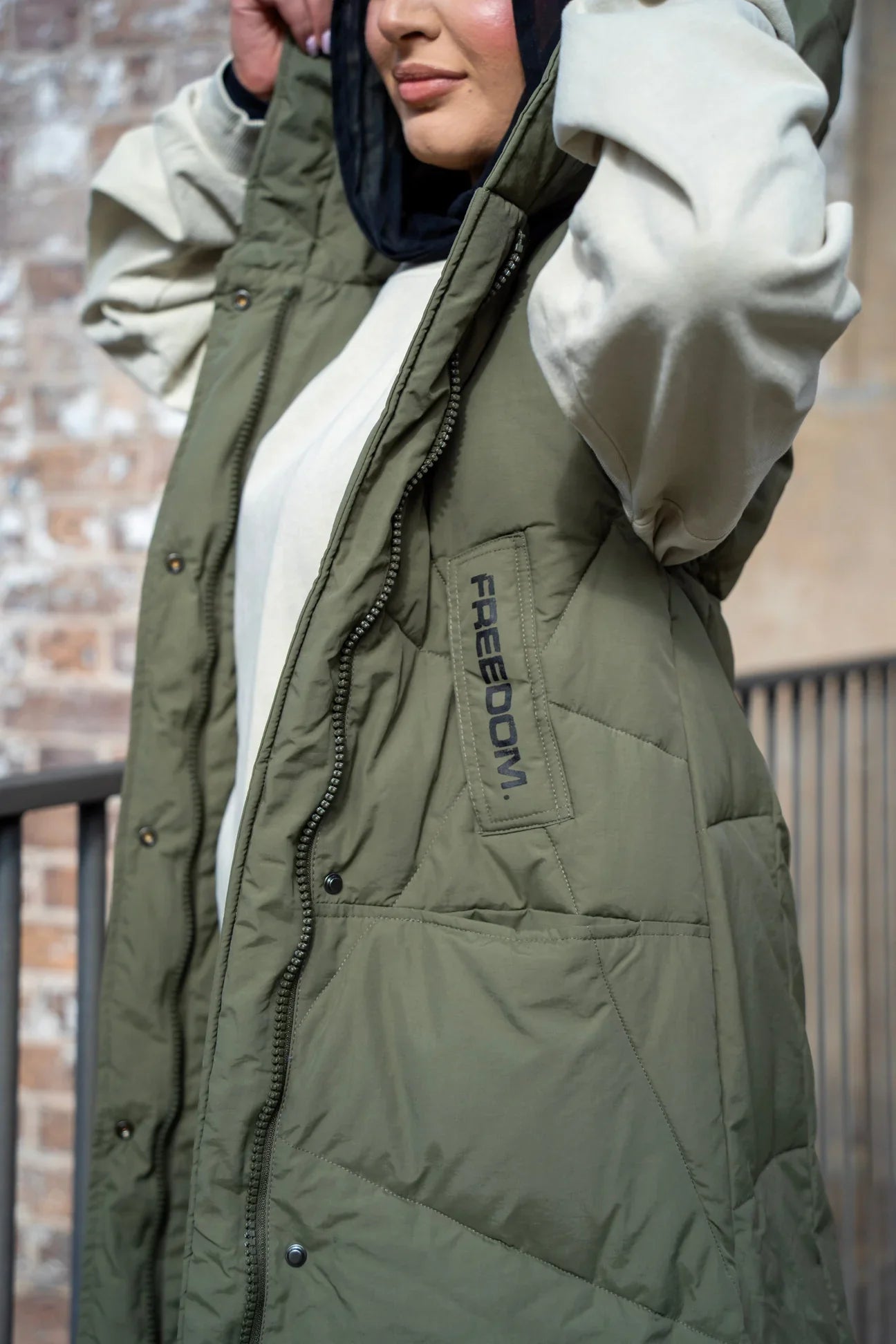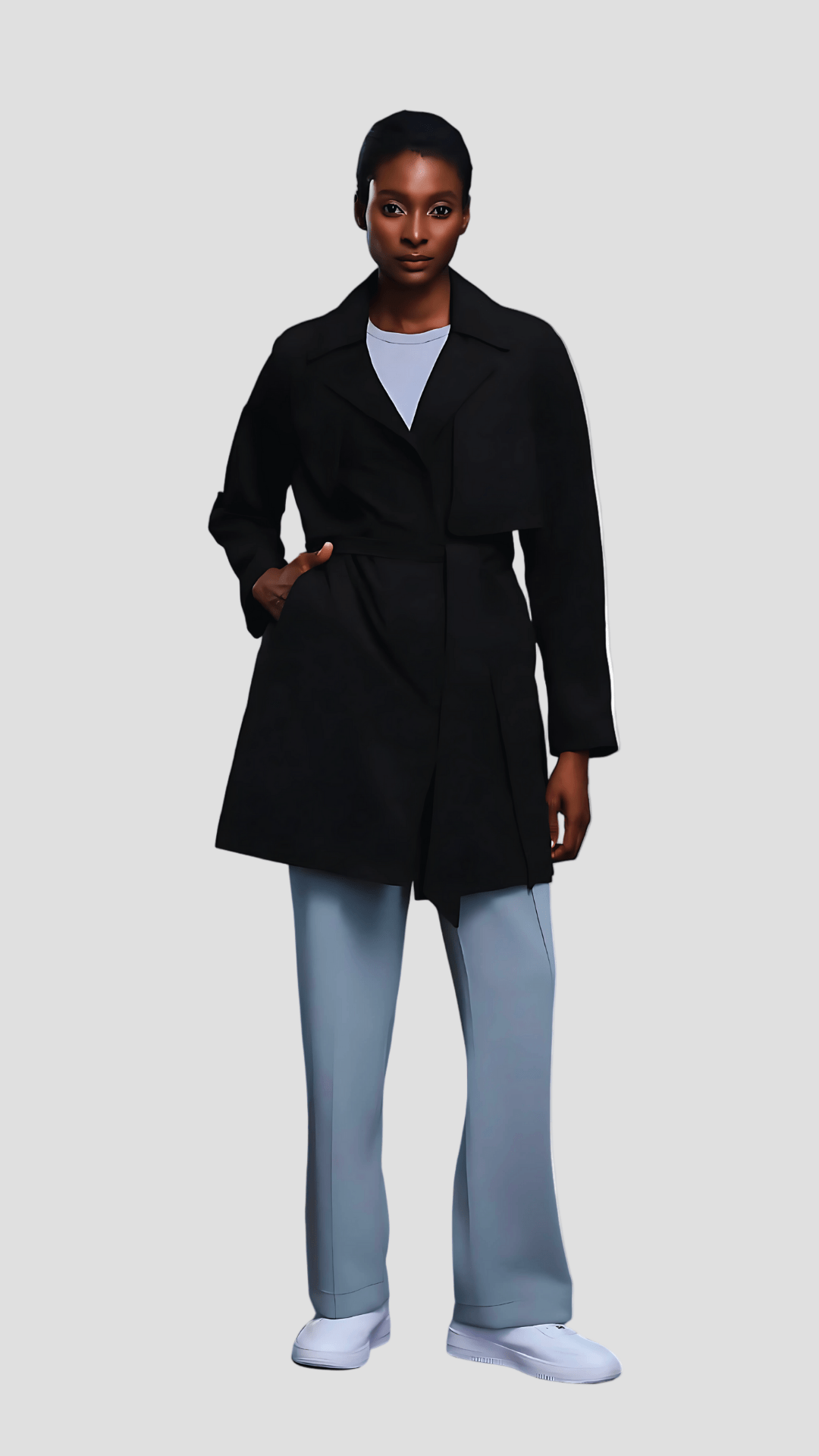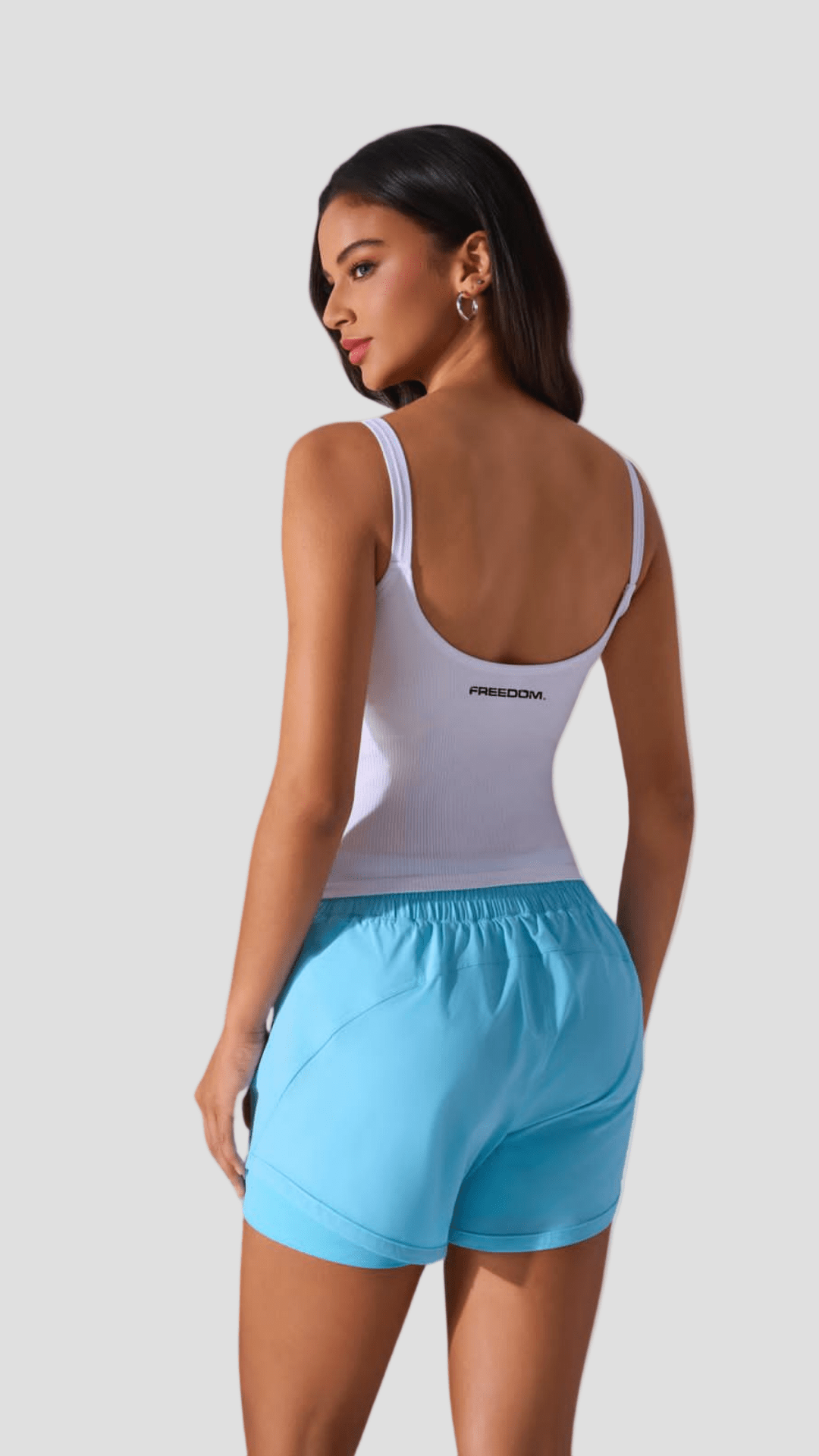Best Fabrics for Breathability in Australian Winter: Freedom Active Wear
Best Fabrics for Breathability in Australian Winter: Freedom Active Wear: When the cool breeze of an Australian winter rolls in, the way we dress transforms completely. But for those who value movement, wellness, and an active lifestyle, staying warm doesn’t mean layering up in suffocating fabrics that trap heat and sweat. The key to comfort, performance, and style through winter is one simple thing — breathable fabrics.
At Freedom Active Wear, breathability is not just a feature; it’s a foundation. Designed for women who refuse to compromise between comfort and confidence, our collections balance warmth, airflow, and flexibility. Whether you’re on your morning jog, hitting a pilates class, or simply heading out for a casual day, your outfit should move with you — not against you.
Let’s explore what makes breathable fabrics so essential during Australia’s cooler months and which materials are the best choices for both performance and everyday wear.

Understanding Breathability in Fabrics
Breathability refers to how well a fabric allows air and moisture to move through it. In simple terms, it’s the fabric’s ability to let your skin “breathe.”
During winter, we often wear multiple layers or thicker materials to stay warm, but this can cause overheating and discomfort — especially if you’re active.
That’s where breathable fabrics come in. They help regulate temperature, wick away sweat, and prevent moisture buildup that can lead to chills or irritation. Breathability doesn’t mean you’ll be cold — it means you’ll stay dry, balanced, and comfortable, no matter the conditions.
Why Breathability Matters in Australian Winters
Australia’s winter isn’t like Europe’s or Canada’s. Temperatures are mild in most regions, fluctuating between cool mornings and surprisingly warm afternoons. This constant temperature variation means your clothing needs to adapt quickly.
Breathable fabrics solve this challenge by:
-
Allowing moisture to escape when you warm up during activity.
-
Providing insulation when temperatures drop.
-
Preventing clammy discomfort from trapped sweat.
-
Supporting natural body regulation, so you stay warm but not overheated.
Essentially, breathable fabrics help you achieve the perfect equilibrium between warmth and freshness.
The Best Breathable Fabrics for Australian Winters
Let’s dive into the top fabrics that deliver both warmth and breathability — the perfect duo for active Australian women this winter.
1. Merino Wool – Nature’s Smart Fabric
Merino wool is the ultimate all-weather fabric. Unlike traditional wool, which can feel heavy and itchy, Merino wool is lightweight, ultra-soft, and thermoregulating.
Why it’s ideal for winter activewear:
-
Naturally breathable, allowing heat and sweat to escape.
-
Provides warmth even when damp.
-
Odor-resistant, making it perfect for long wear.
-
Soft against the skin and suitable for layering.
Merino wool works like nature’s own climate control system. Whether you’re hiking in the cold or doing yoga indoors, it adjusts to your body temperature, keeping you just right.
2. Bamboo Fabric – Sustainable and Skin-Friendly
Bamboo-based fabrics have become a favorite among environmentally conscious brands like Freedom Active Wear. Beyond sustainability, bamboo fabrics are known for their natural breathability and antibacterial properties.
Why bamboo is a top winter performer:
-
Wicks away moisture faster than cotton.
-
Regulates temperature efficiently.
-
Feels luxuriously smooth and soft.
-
Hypoallergenic and perfect for sensitive skin.
During the cooler Australian months, bamboo fabric’s moisture-wicking power prevents clamminess while its softness offers a cozy yet fresh feel.

3. Nylon Blends – Light, Stretchy, and Airy
Modern activewear often includes nylon blends for a reason. Nylon is durable, lightweight, and offers excellent airflow when engineered with elastane or spandex.
What makes nylon blends breathable:
-
Fast-drying, ideal for intense workouts.
-
Stretchable and comfortable for all-day wear.
-
Combines flexibility with warmth retention.
-
Maintains shape even after repeated washing.
Freedom Active Wear uses performance nylon blends in many of its leggings and tops, offering unrestricted movement while keeping your body dry during winter workouts.
4. Polyester with Moisture-Wicking Technology
Polyester often gets a bad reputation, but high-quality polyester in activewear is completely different from the cheap versions found in fast fashion. Advanced polyester fabrics today are engineered for moisture management and thermoregulation.
Why it works for winter activewear:
-
Draws sweat away from the body.
-
Dries quickly, preventing cold dampness.
-
Works well as an inner or mid-layer.
-
Resistant to wrinkles and shrinking.
Freedom Active Wear incorporates technical polyester fabrics that enhance breathability without compromising on insulation — perfect for brisk morning runs or light winter layering.
5. Cotton Blends – Comfort Meets Cool
While 100% cotton can retain moisture, cotton blends (combined with polyester or spandex) provide a balance between softness and performance. They offer moderate breathability, making them great for casual or low-intensity winter days.
Benefits of cotton blends:
-
Naturally soft and breathable.
-
Provides warmth without heaviness.
-
Excellent for loungewear and light exercise.
-
Maintains a timeless, clean look.
Freedom Active Wear’s cotton-blend tops and jackets bring effortless style and comfort, ideal for those cozy coffee catch-ups after a workout.
6. Spandex (Elastane) – The Breathable Stretch Companion
Spandex alone isn’t the most breathable, but when combined with other fibers, it creates a flexible, breathable structure that enhances airflow while hugging your body comfortably.
Why spandex matters:
-
Adds four-way stretch for ease of movement.
-
Enhances fit without restricting air circulation.
-
Prevents sweat buildup with smart ventilation.
-
Retains shape and elasticity even in cooler weather.
You’ll find spandex in Freedom Active Wear leggings, tops, and performance outerwear — giving you a second-skin feel that supports you through every move.
7. Recycled Fabrics – Eco-Breathable Innovation
As sustainability continues to define fashion, recycled materials like recycled polyester or nylon are rising stars. These fabrics are designed to maintain the breathability and comfort of their virgin counterparts while reducing environmental impact.
Why they’re perfect for conscious consumers:
-
Breathable, moisture-wicking, and lightweight.
-
Environmentally responsible.
-
Retain warmth without excess bulk.
-
Ideal for layering and all-day comfort.
Freedom Active Wear embraces eco-friendly innovation, offering garments that are not only high-performance but also kind to the planet.

Layering Breathable Fabrics for Maximum Comfort
The secret to staying warm without overheating lies in layering smartly with breathable materials.
Here’s how to do it right:
1. Base Layer – Moisture Management
Start with a moisture-wicking base, like bamboo or Merino wool. It keeps your skin dry and prevents sweat from cooling your body.
2. Mid Layer – Insulation and Warmth
Add a layer of nylon or recycled polyester to trap warmth while allowing moisture to escape.
3. Outer Layer – Protection from the Elements
Finish with a lightweight trench or active jacket made from breathable, wind-resistant fabric. Freedom Active Wear’s outerwear offers a perfect balance between coverage and ventilation.
This strategic layering approach keeps you warm, dry, and stylish, whether you’re training outdoors or strolling through town.
Signs Your Fabric Isn’t Breathable
Wondering if your outfit is holding you back? Look for these signs:
-
You feel clammy or sticky after short activity.
-
Sweat patches form quickly under layers.
-
You overheat even in moderate temperatures.
-
Your clothing feels heavy or suffocating.
If any of these ring true, it’s time to invest in breathable performance fabrics that move moisture away from your skin instead of trapping it.
Freedom Active Wear’s Philosophy on Breathable Comfort
Freedom Active Wear is more than just a label — it’s a movement towards functional fashion that empowers women. Every piece is crafted with precision, purpose, and the Australian lifestyle in mind.
Here’s what sets the brand apart:
-
Focus on temperature-regulating fabrics ideal for Australian weather.
-
Use of eco-conscious and skin-friendly materials.
-
Designed for real women who balance fitness, comfort, and everyday life.
-
Tested to ensure optimal breathability and durability.
The goal is simple — to help women feel free, confident, and comfortable no matter the season.
How to Care for Breathable Fabrics
To maintain the performance of your activewear, follow these care tips:
-
Wash in cold water to preserve fibers.
-
Avoid fabric softeners, which can clog pores in technical fabrics.
-
Air dry instead of using high heat.
-
Turn garments inside out before washing to protect texture.
-
Store in a cool, dry place to maintain freshness.
With proper care, your breathable activewear will last for years while retaining its comfort and quality.
Breathability and Style Go Hand in Hand
Breathability doesn’t mean compromising style. Freedom Active Wear’s collections blend function with aesthetic appeal — sleek silhouettes, flattering fits, and timeless designs. From performance leggings to elegant trench coats, every item offers the perfect fusion of practicality and beauty.
Imagine pairing moisture-wicking leggings with a lightweight trench coat for a crisp morning walk or a bamboo tee under a Merino wool jacket for post-yoga brunch — effortless, breathable sophistication.
Why Freedom Active Wear Leads the Way in Breathable Fashion
Australian winters call for clothing that’s as adaptable as the women who wear it. Freedom Active Wear delivers that adaptability through:
-
Innovative fabric technology that balances warmth and ventilation.
-
Thoughtful design tailored to real movement and style.
-
Commitment to sustainability without sacrificing performance.
-
Comfort-first philosophy, because confidence starts with how you feel.
Freedom Active Wear isn’t just another brand; it’s a reflection of modern Australian women — strong, stylish, and free to move.
Conclusion
Breathable fabrics are the unsung heroes of winter activewear. They help your body function naturally, ensuring warmth without suffocation and style without compromise. Whether it’s Merino wool, bamboo, or a smart performance blend, the right material can make all the difference between a stuffy workout and one filled with energy and ease.
Freedom Active Wear understands this balance better than anyone. Each piece in the collection is a celebration of freedom — the freedom to move, breathe, and live without restriction.
So this winter, choose activewear that works as hard as you do. Choose breathability. Choose comfort.
Choose Freedom Active Wear — and feel the freedom.
🧵 Detailed FAQs with Answers
1. What are the best breathable fabrics for Australian winters?
The best breathable fabrics for Australian winters include Merino wool, bamboo, nylon blends, polyester with moisture-wicking technology, and cotton-spandex mixes. These materials balance warmth and airflow, keeping you dry and comfortable.
2. Why is breathability important in winter clothing?
Breathable fabrics help regulate body temperature, allowing moisture and heat to escape while retaining necessary warmth. This prevents overheating, clamminess, and discomfort during physical activities or temperature changes.
3. Are breathable fabrics warm enough for Australian winters?
Yes, breathable fabrics like Merino wool and bamboo naturally adjust to your body temperature, offering both insulation and ventilation. They trap warmth when needed and release excess heat during activity.
4. Is Merino wool good for winter workouts?
Absolutely. Merino wool is perfect for winter workouts because it’s lightweight, moisture-wicking, odor-resistant, and thermoregulating — meaning it keeps you warm without making you sweat excessively.
5. What makes bamboo fabric great for winter activewear?
Bamboo fabric is soft, eco-friendly, and naturally breathable. It wicks away moisture, regulates temperature, and feels gentle on sensitive skin, making it a top choice for winter workouts or layering.
6. How does polyester perform in cold weather?
Modern performance polyester is engineered to wick moisture, dry quickly, and maintain warmth. It’s excellent for layering and helps prevent the chill caused by dampness after sweating.
7. Are cotton leggings breathable in winter?
Pure cotton traps moisture, but cotton blends (like cotton-spandex or cotton-polyester) provide better breathability and flexibility, making them suitable for mild winter days or low-intensity activities.
8. Can I wear breathable fabrics for both indoor and outdoor workouts?
Yes. Breathable fabrics transition seamlessly from indoor yoga sessions to outdoor runs. Their adaptive ventilation keeps you cool indoors and comfortably warm outdoors.
9. What are moisture-wicking fabrics?
Moisture-wicking fabrics pull sweat away from your skin and transport it to the outer layer of the material, where it evaporates quickly. This keeps you dry and prevents chills in winter.
10. Do breathable fabrics lose warmth?
No. Breathable doesn’t mean thin or cold — it means temperature regulation. Good breathable fabrics retain enough warmth while preventing heat buildup during movement.
11. How can I tell if my activewear is breathable?
Look for lightweight, moisture-wicking, or technical fabric tags. If your clothing feels cool and dry during activity, it’s breathable. If it feels sticky or heavy after exercise, it’s not.
12. Are recycled fabrics breathable?
Yes. Recycled nylon and polyester maintain excellent breathability and moisture control, just like their non-recycled versions. They’re also sustainable and durable.
13. What’s the difference between breathable and waterproof fabrics?
Breathable fabrics allow air and moisture to pass through; waterproof fabrics block them. Some performance fabrics combine both — breathable yet water-resistant — perfect for light winter rain.
14. Can I wear breathable fabrics as a base layer in winter?
Definitely. A breathable base layer made of bamboo, Merino wool, or polyester helps manage moisture close to your skin and keeps you warm under outer layers.
15. How does nylon compare to cotton for breathability?
Nylon is more moisture-resistant and dries faster than cotton. Cotton absorbs sweat, while nylon actively wicks it away — making nylon better for high-performance wear.
16. Do Freedom Active Wear products use breathable fabrics?
Yes. Every Freedom Active Wear piece is crafted using breathable, stretchable, and performance-tested materials that ensure comfort and flexibility in any season.
17. Can breathable fabrics prevent body odor?
Yes. Natural materials like bamboo and Merino wool are naturally antibacterial, helping to reduce odor buildup even after long wear.
18. What should I layer with breathable fabrics in winter?
Layer breathable base fabrics with insulating mid-layers and windproof outerwear. This combination keeps you warm without trapping sweat or restricting airflow.
19. How should I wash breathable fabrics?
Wash in cold water with mild detergent and avoid fabric softeners, which can clog the fabric’s pores. Air drying helps maintain the structure and breathability.
20. Is spandex breathable?
Spandex alone isn’t highly breathable, but when blended with cotton, polyester, or nylon, it creates flexible, breathable, and body-contouring garments — ideal for activewear.
21. Can breathable fabrics protect against wind?
Some breathable fabrics, especially when layered or finished with a thin coating, provide light wind resistance without compromising airflow.
22. What makes Merino wool different from regular wool?
Merino wool fibers are finer and softer, making them non-itchy and naturally thermoregulating. It’s warm, breathable, and ideal for performance wear.
23. Are breathable fabrics suitable for sensitive skin?
Yes. Bamboo, cotton blends, and Merino wool are hypoallergenic and soft, minimizing irritation and allowing skin to breathe freely.
24. Do breathable fabrics stretch?
Many breathable fabrics are engineered with stretch fibers like spandex or elastane, giving you flexibility for workouts or everyday wear.
25. Can I wear breathable fabrics casually?
Absolutely. Breathable materials are not limited to workouts — they’re perfect for all-day wear, travel, or leisure, ensuring comfort without sacrificing style.
26. Are Freedom Active Wear’s leggings breathable?
Yes. Freedom Active Wear leggings are crafted from high-performance, moisture-wicking fabrics that keep your legs cool and comfortable through every move.
27. What are the benefits of bamboo over polyester?
Bamboo offers natural cooling, softness, and eco-friendly appeal, while polyester offers high durability and moisture control. The best brands combine both for superior performance.
28. Can breathable fabrics be eco-friendly?
Yes. Sustainable fabrics like organic cotton, bamboo, and recycled polyester offer excellent breathability with minimal environmental impact.
29. What’s the best breathable fabric for yoga or pilates in winter?
Bamboo and nylon blends work best for yoga or pilates because they offer stretch, breathability, and softness without overheating.
30. How do breathable fabrics handle sweat during cold workouts?
They draw sweat away from the body and let it evaporate before it cools, preventing chills while maintaining warmth.
31. What are temperature-regulating fabrics?
Temperature-regulating fabrics adapt to body heat — warming you when it’s cold and cooling you when it’s hot. Merino wool and bamboo are prime examples.
32. How do I keep breathable fabrics soft after washing?
Avoid harsh detergents or dryers. Use gentle cycles, wash inside-out, and air dry. These practices preserve softness and longevity.
33. Are Freedom Active Wear tops made with breathable fabrics?
Yes. Freedom Active Wear tops are designed using lightweight, moisture-wicking materials that enhance ventilation and performance in all weather conditions.
34. Why do synthetic fabrics feel less breathable sometimes?
Lower-quality synthetics trap heat. Premium performance synthetics, like those used by Freedom Active Wear, are engineered to allow airflow and wick moisture efficiently.
35. Can I layer breathable fabrics under a trench coat?
Definitely. Pairing breathable activewear with outerwear like a trench keeps you stylish and comfortable. It allows moisture to escape even when bundled up.
36. Are breathable fabrics durable?
Yes. When blended with performance fibers like nylon or spandex, breathable fabrics resist wear and tear while maintaining flexibility and structure.
37. What are the signs of poor breathability in clothing?
If your clothes feel damp, sticky, or heavy after short wear, or if you overheat easily, the fabric lacks proper ventilation.
38. Do breathable fabrics wrinkle easily?
Most performance fabrics, especially polyester blends, are wrinkle-resistant, maintaining a sleek look even after hours of wear.
39. Are breathable fabrics suitable for layering with Freedom Active Wear?
Yes. All Freedom Active Wear pieces are designed for layering — breathable yet structured, ensuring comfort and style from base to outer layers.
40. Why choose Freedom Active Wear for breathable winter fashion?
Because Freedom Active Wear combines high-performance fabrics, sustainable design, and tailored style. Every piece is crafted to balance breathability, warmth, and empowerment — so you can move freely and feel confident in every season.


